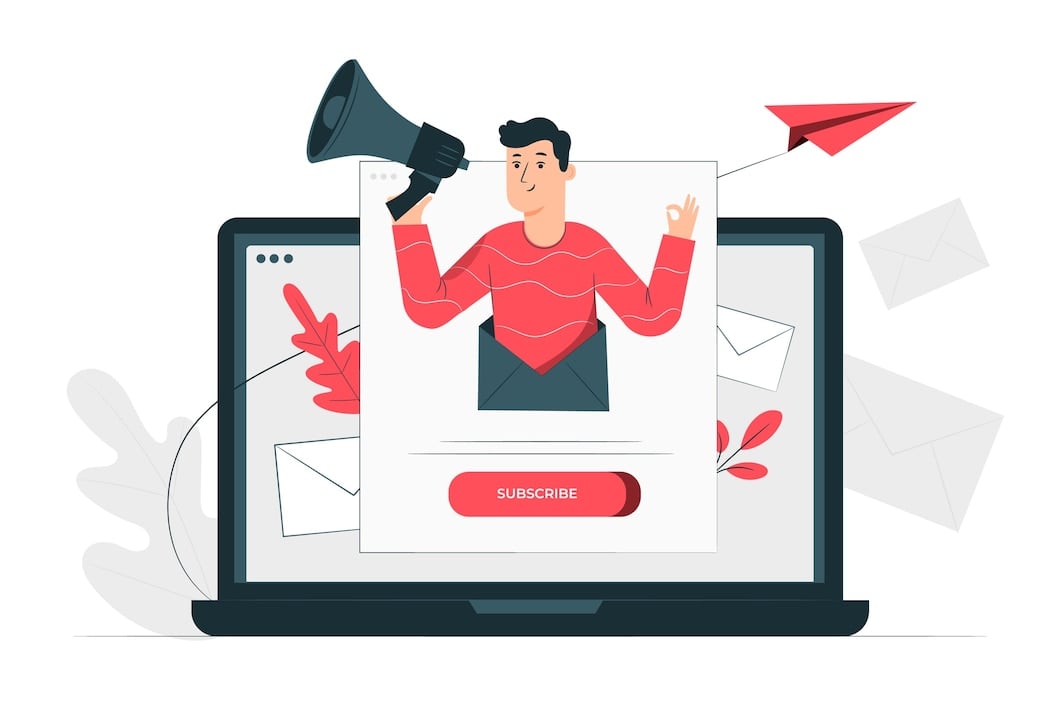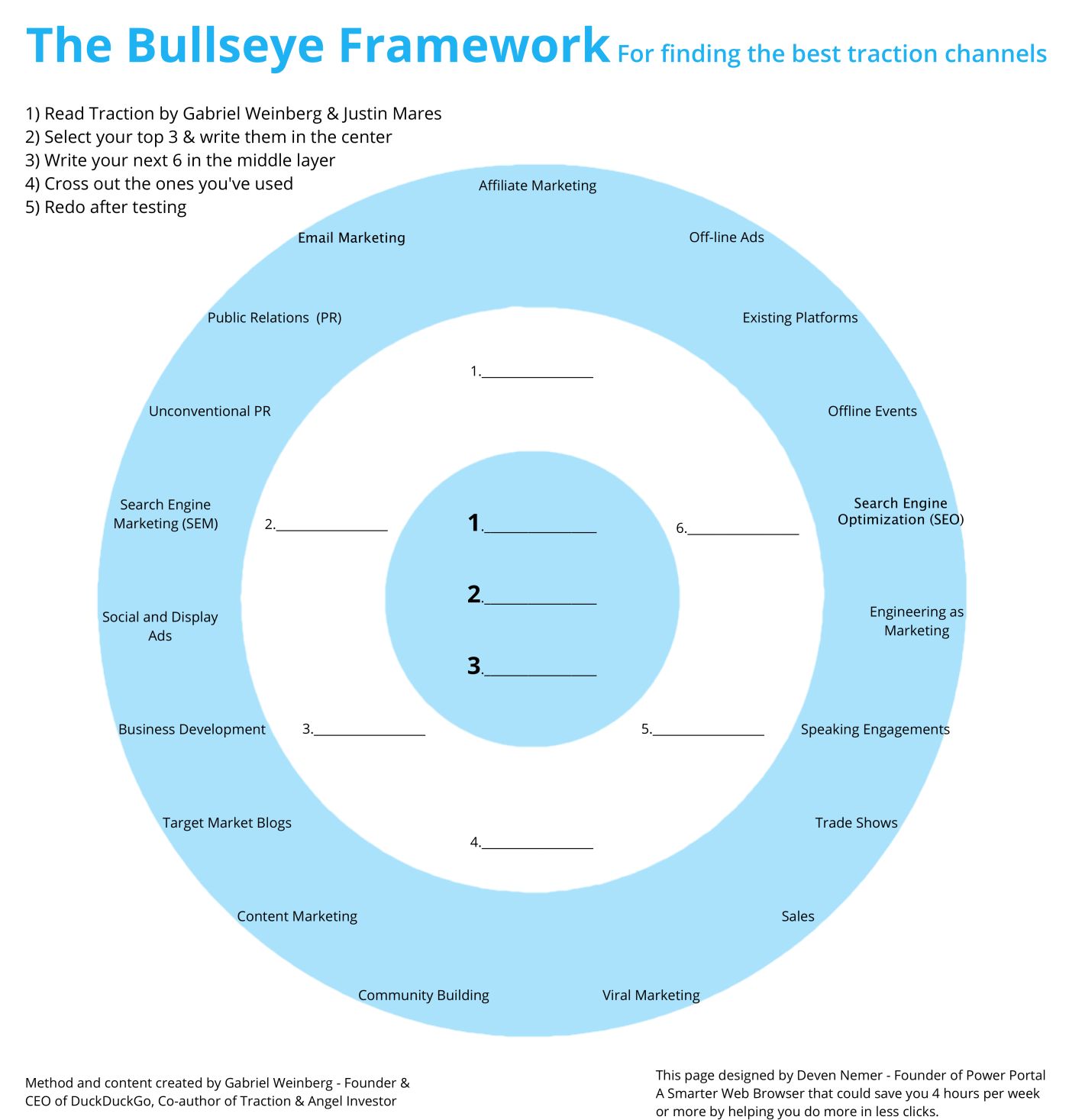Table of Contents
Customer acquisition channels: how to choose and optimise them to grow your business
In marketing, people often talk about customer acquisition channels or traction channels, which are the ways that a company can reach their target audience and win new customers. The term “traction” was coined by Gabriel Weinberg and Justin Mares in their bestselling book “Traction: How Any Startup Can Achieve Explosive Customer Growth”. In it, they outlined the main customer acquisition – or “traction” – channels and the most effective ways to rapidly grow a business.
What are customer acquisition channels?
According to Weinberg and Mares, there are 19 traction channels that a business can use to find new customers. Let’s go through them one by one.
Viral marketing
Viral marketing is based on the power of word of mouth: for example, a user recommends a product or service to people they know in exchange for a discount or another type of reward.
Public relations
Public relations includes the publishing of articles and editorials in newspapers, magazines and authoritative blogs.

Unconventional public relations
This term refers to marketing actions that allow you to generate publicity without major financial investment. The key to success is creativity: entertaining, shocking or original content that can be used to draw the public’s attention to your product or service.
Search engine marketing (SEM)
Advertising on Google or other search engines targeted at users searching with specific keywords. Known as insertions, these ads appear in the top or bottom part of the search engine results page (SERP).

Social and display Ads
Social networks let you precisely target the users who will see ads, enabling you to segment your target audience based on demographic criteria, specific interests and online behaviour. With display ads, on the other hand, a firm can publish banner ads on third-party websites belonging to the Google Display Network or other platforms.
Search engine optimisation (SEO)
Search engine optimisation is a series of activities designed to improve the organic positioning of a website or web page in the SERP provided by Google or other search engines.
Email marketing
You can reach leads directly through their inboxes with newsletters and promotional emails aimed at converting them into customers.

Content marketing
This terms refers to the publication of interesting content – made available for free or a small fee – aimed at attracting users to your website or other platforms. Examples of content marketing include blog articles, PDF guides and video tutorials.
Engineering as marketing
Developing free tools such as apps, widgets and educational microsites is another way to connect with potential customers.
Targeting blogs
Although the publication of guest posts could also fall under public relations, it warrants special mention. Publishing articles on authoritative external blogs that are read by potential customers can provide excellent return on a modest investment.
Offline advertising
Advertising in traditional media (TV, radio, printed press) and through posters and billboards improves the visibility and credibility of an organisation, although it isn’t always easy to accurately measure your return on investment (ROI).

Business development
Developing partnerships and collaborations with another firm or professional offering related products or services can help both of you to grow your businesses without additional outlay.
Direct sales
This channel covers all activities seeking to convince potential customers to buy a product or service directly from you.
Affiliate programmes
Affiliate programmes involve an agreement between two parties (two companies, or a business and a user of a product or service) in which a reward is given in return for promoting an organisation’s products or services. Uber, for example, offers a free credit to users who get their friends and acquaintances to sign up with the platform.
Existing platforms
This category includes the Apple and Android app stores, sites that offer browser extensions, social media and any other external platform on which it’s possible to promote a brand.
Trade fairs
These events are a traditional customer acquisition channel that can help businesses to generate new leads and partnerships, strengthen relationships with customers and partners, and build relationships with bloggers and journalists.
Organising your own events
Conferences, workshops, conventions and live product launches enable direct interaction with customers and partners, while also generating coverage in newspapers, magazines and industry blogs.

Attending other people’s events
Attending shows, round tables and conventions as a guest can enhance your reputation and help you acquire new leads.
Creating a community
In the article “How to create a successful community”, we saw how building an active online community can help attract different target audiences and increase the loyalty of existing customers.
How to choose customer acquisition channels
With the plethora of customer acquisition channels available, it can be hard to know which to use, especially if you’re starting a business or launching a new product or service. Fortunately, Weinberg and Mares have developed a five-stage method for choosing your traction channels, which they call the “Bullseye Framework”. Let’s see what it involves.
Phase 1 – Brainstorming
It’s essential to analyse the various customer acquisition channels, focusing on what competitors are doing and the results obtained, the firm’s positioning and the nature of the products/services offered. To this end, it can be helpful to create a list or table containing the following information:
- The potential, on a scale from 1 to 5, that each channel offers.
- The cost per acquisition (CPA), in other words, how much you have to invest to win each customer. The formula for calculating this is simple: marketing costs incurred / number of customers acquired.
- The number of people you can reach.
- The time it will take to quickly and cost-effectively test the channel.
This phase calls for a thorough assessment of the potential and specifics of each channel and might take several weeks.
2 – Ranking
Using the bullseye framework shown in the image below, traction channels are divided into three sections. The inner circle is where the channels that were ranked most highly in the brainstorming phase go; the middle circle is for channels with potential; and the outer circle is where those with the least promise go.

3 – Prioritising
Look at the inner circle: if it contains more than three channels, you should pick the best three and move the others to the middle circle.
4 – Testing
Now it’s time to test the effectiveness of our top three channels. If these turn out to be ineffective or too expensive, move on to the channels in the middle circle. But if one of these gives good results, move on to the next phases.
5 – Focusing resources
This phase is about focusing available resources on the most effective channel for achieving the best possible customer acquisition results.
Remember that some channels may work better or worse, depending on the developmental stage of the company and its products/services. It’s therefore advisable to test them from time to time to ensure that you’re always using the most effective channels.
How to optimise acquisition channels
Google Analytics is a useful tool for optimising acquisition channels. The data it provides enables you to identify sources of traffic, which is to say the online acquisition channel that brought a person to your website. Furthermore, you can also view all the actions that a user took once they landed on your site: for example, the pages visited, files downloaded, products added and removed from the shopping basket, and forms filled out.

Google Analytics can help your business improve marketing with a data-driven approach. You can use its reports to improve the conversion rate of each channel, segment the target audience into different groups based on buying behaviour and identify potential problems on your website.
Let’s take at a practical example: an online store selling footwear notices a very low conversion rate from users acquired through social media platforms. To work out the cause of the problem, the following information provided by Google can be analysed:
- Technical data: devices and browsers used by visitors. Are web pages optimised for all mobile phones, tablets and desktop devices, as well as the latest browser versions?
- Geographic data: Visitors’ country of origin. Is the site translated into different languages? Do they have the option to ship to their country?
- Site content: Pages visited and searches made on the website. What content could improve the user experience and speed up the buying process?
- Campaign reports: Which advertising campaigns get the best results on social media platforms? Is it possible to boost the conversion rate by increasing the budget or better profiling the target audience?
When optimising acquisition channels, it’s important to remember that the customer journey is not linear but is made up of a series of different interactions (touchpoints) with the business. The complexity of the decision-making process and the mechanisms that lead to conversion require an in-depth examination of the role played by traction channels in this process. This will allow you to target your resources on the channels that are most effective in converting prospects into customers.
By using Google Analytics’ attribution models, you can decide how credit for conversions is attributed to different channels. For example, the “first interaction” attribution model assigns all credit for conversions to the first channel with which the user interacted, whereas the “time decay” model assigns most credit to the touchpoints used closest in time to the conversion. These different models allow you to interpret the customer journey data from different viewpoints, providing actionable insights for improving your marketing strategy.
So, the takeaway here is that there isn’t a single most effective acquisition channel: rather, you need to choose the customer acquisition channels that best fit your business goals, and then continuously fine tune them through testing and conversion rate tracking.



